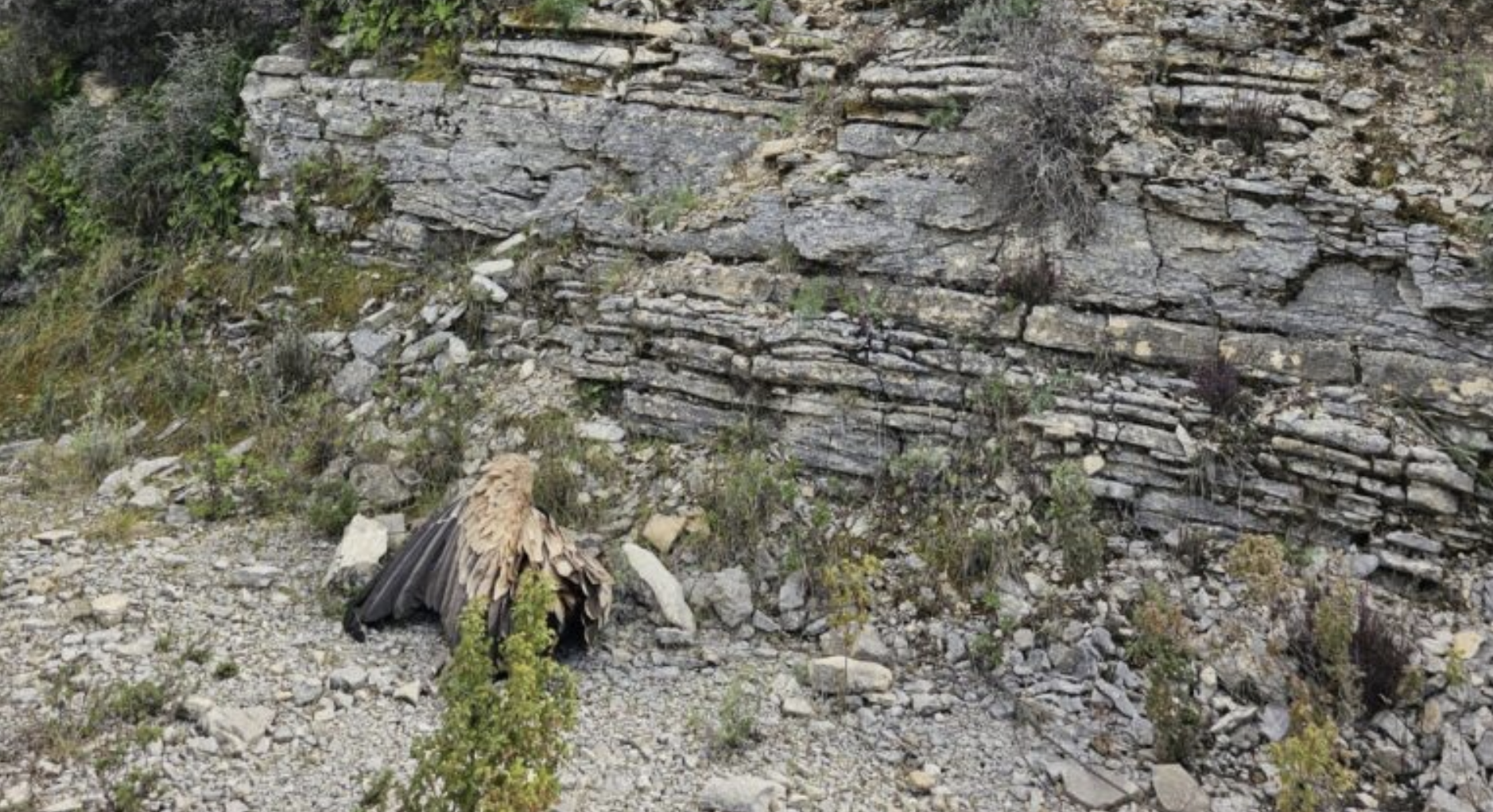Griffon Vulture Kvarner undertook a record breaking flight back in the autumn travelling 370km covering the whole of the Adriatic from Croatia to Italy. What has he been up to since then?
From Croatia to Italy
Found after an unsuccessful fledging last summer, Kvarner was rescued by the Beli Rescue Centre on the island of Cres and released in the autumn with a GPS transmitter. Kvarner left the release site and traveled a distance of 170 kilometers over open sea traveling west from Cres to the Italian town of Ravenna in just three hours, reaching a speed of 117 km/hour.
From there at the end of September Kvarner flew all the way to the Ligurian coast, not far from the French-Italian border, from where it returned east to the Adriatic coast, to Cesena and was spotted on the top of the church cross, a sighting that was recorded by local media.

Kvarner continued its southward movement and was spotted again on October 12 in central Italy, as he rested on top of the historic fort at Roccacinquemiglia.
A long flight takes its toll
A few days later the team at the Beli Rescue Centre were contacted by Italian colleagues having spotted Kvarner sitting in close proximity to people in the town of Lettere, south of Naples, which suggested something was wrong with Kvarner, the bird was possibly exhausted.
Despite attempts by the team at WWF Salerno to catch Kvarner, the bird flew off. But just a week later on October 19 he was spotted in the south of Italy, not far from Catanzaro, clearly exhausted, and the team from WWF Catanzaro staff caught it and transported the bird to a local wildlife rehabilitation centre in Catanzaro.

Kvarner quickly recovered and in collaboration with the Italian State Forestry Department (Corpo Forestale di Stato), Kvarner was transferred and joined the other griffon vultures in a large aviary in the Abruzzo region, which was part of the Griffon Vulture reintroduction project in central Italy years ago. Kvarner will be released in a few weeks, near the local colony of vultures and a supplementary feeding station.
Griffon Vultures in Italy

When released Kvarner will hopefully join the Griffon Vulture population in the country that have made a remarkable comeback since the species was on the verge of extinction. Historically Griffon Vultures ranged from the Italian Alps through the Apennines in central Italy down to Sicily and also on the island of Sardinia. However, changes in farming practices across Italy and human persecution caused the species to disappear from the mainland during the early and mid 20th century, with the only Italian population remaining on Sardinia. Since the early 1990s thanks to the efforts of dedicated conservationists the species has made a remarkable comeback with reintroduction projects at Lake Cornino Nature Reserve in the north, Sirente-Velino Regional Park in central Italy, the Pollino National Park in the south and the Nebrodi Regional Park in Sicily. Today there are around 200 breeding pairs in the country and the LIFE Under Griffon Wings is currently focusing on boosting the Sardinian population.




